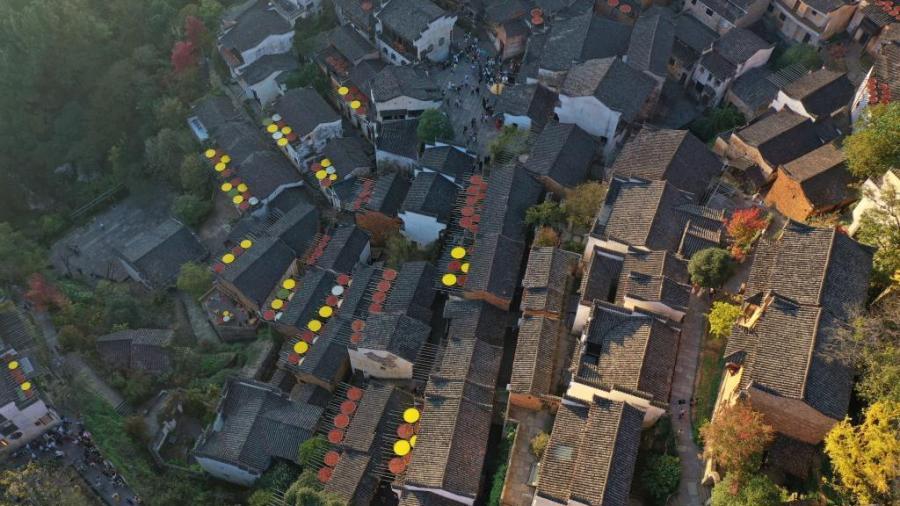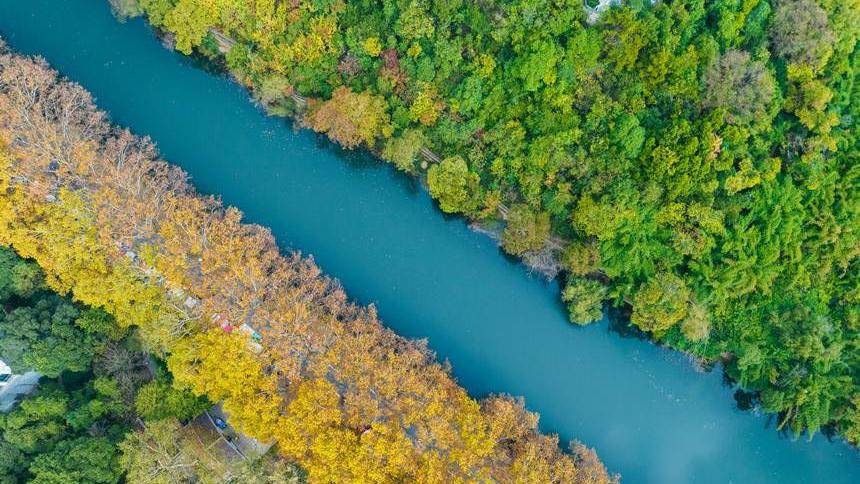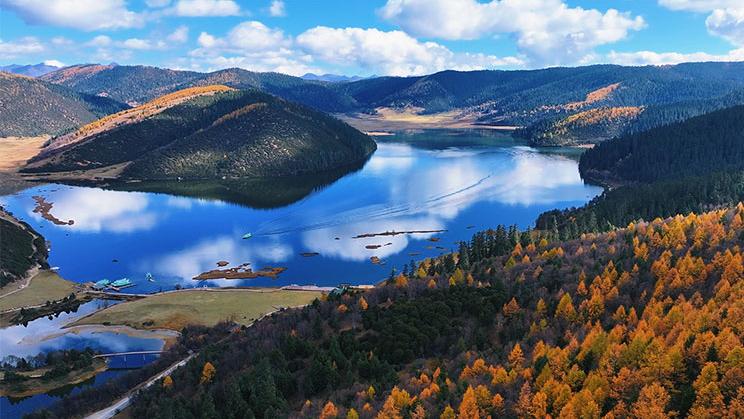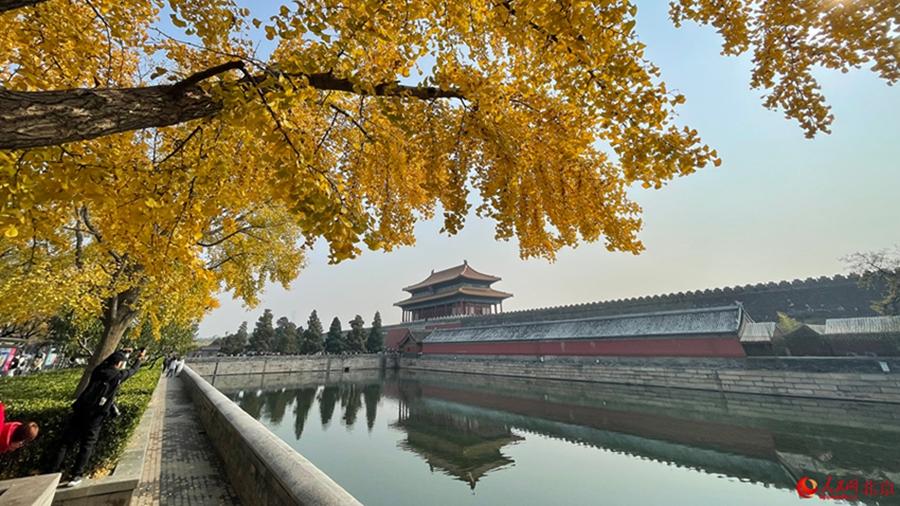Yancheng making "green generators" with "green electricity"
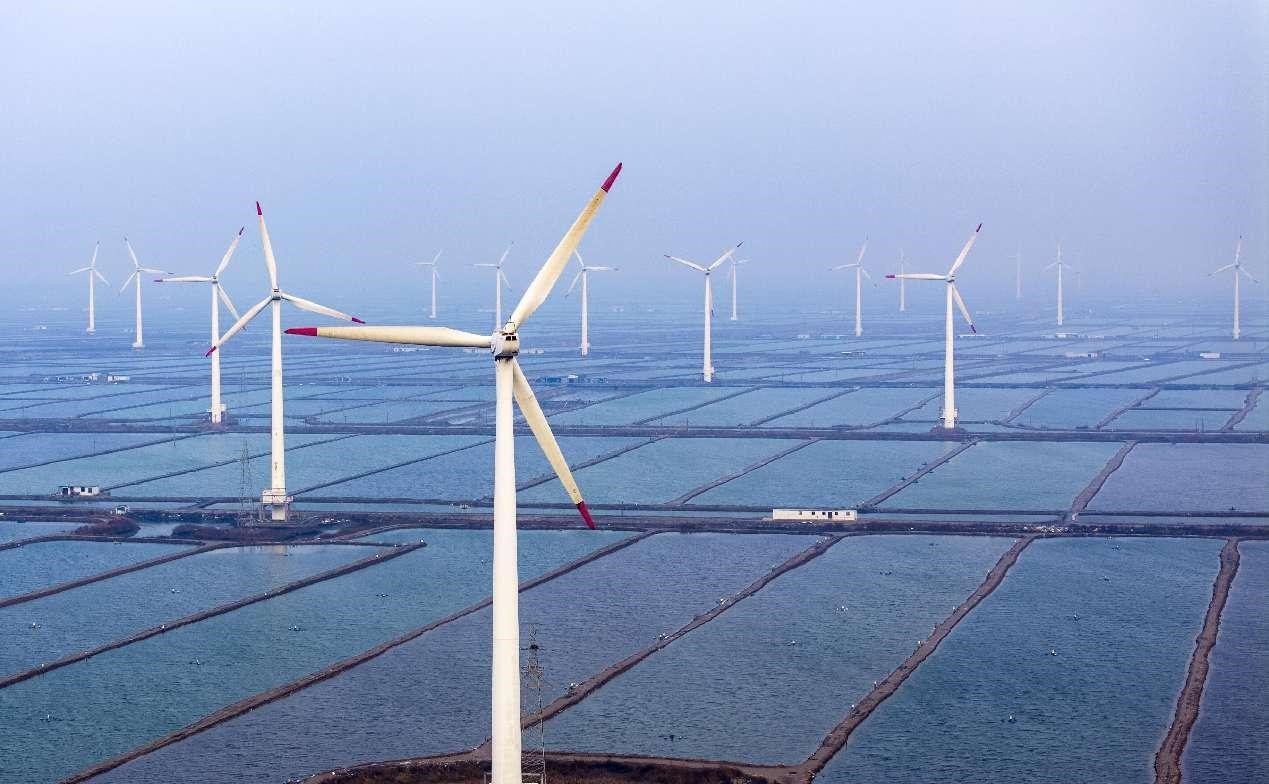
Photo shows wind turbines on a mudflat in Yancheng, east China's Jiangsu province. (People's Daily Online/Ji Haixin)
As the sea breeze rushes toward a wind farm on the shores of the Yellow Sea, at a speed of 7.6 meters per second, the blades of towering wind turbines start spinning.
These turbines convert mechanical energy into electrical energy, and in an instant, the "green electricity" is transmitted through undersea cables to the land, where it is fed into the power grid.
Over 70 kilometers away from the wind farm, machines in a turbine general assembly factory are running tirelessly, powered by the "green electricity" from the sea. Nacelles and hubs are assembled here and then transported offshore to join with blades and towers to form gigantic "windmills."
Yancheng, located on the coast of east China's Jiangsu province, boasts the country's largest offshore wind power industrial cluster and a huge capacity of offshore wind power. It has developed a comprehensive offshore wind power industrial chain that integrates research and design, equipment manufacturing, resource development, and operational services. It is using "green electricity" to produce "green generators."
In a lab in the general assembly factory of Goldwind Science and Technology Co., Ltd. in Dafeng Economic Development Zone, Yancheng, a prototype of a 10 MW wind turbine was being tested, with real-time data flashing on a large screen.
"Research and design, as well as prototype testing, are the starting point for wind turbine manufacturing," said Lu Jinhong, deputy director of the lab.
According to Lu, the company would first collaborate with suppliers to produce a prototype based on blueprints, and then send it to the laboratory and a test field for hundreds of integrated tests. After third-party certification, the prototype then enters mass production. The entire process takes about a year.
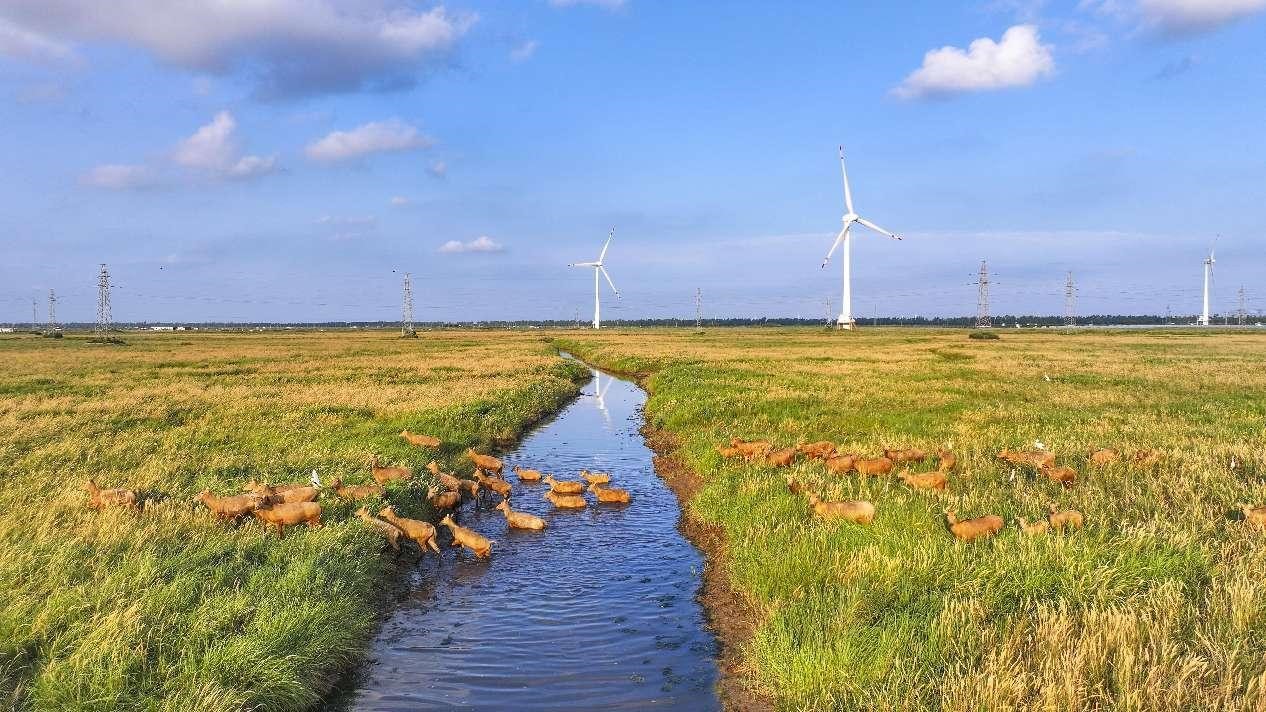
In Dafeng district, Yancheng, east China's Jiangsu province, milu deer and rotating wind turbines make a fascinating picture depicting the harmonious coexistence between man and nature. (People's Daily Online/Shi Jun)
The general assembly factory of Goldwind Science and Technology Co., Ltd. primarily assembles the structural components of nacelles and hubs. As a facility that started with producing 2 MW offshore wind turbines, it is now able to manufacture turbines up to 11 MW, with an annual production capacity exceeding 1,200 units, 30 percent of which are exported.
Deputy general manager Ning Haifeng attributes the company's growth to the efforts made by the local industry to strengthen and extend the industrial chain.
A wind turbine comprises a nacelle, a hub, blades, and a tower. It has thousands of components manufactured by over 300 first-tier suppliers.
Most of the large components can be sourced in Dafeng Economic Development Zone, while key parts are available from suppliers in Yancheng. About 95 percent of all components can be found in Jiangsu province, where a supply chain that enables delivery within three hours is developed.
In recent years, Yancheng has gathered 41 enterprises above the designated size, building the largest offshore wind power industrial cluster in the country, with the total production capacity accounting for approximately 40 percent of the national output.
Yancheng boasts a coastline of 582 kilometers, with an average annual wind speed of 7.6 meters per second at a height of 100 meters above the sea level, and annual full-load hours exceeding 3,000.
Since 2016, Yancheng has established 23 offshore wind farms, with a total installed capacity of over 5.54 million kW, accounting for 46.9 percent of Jiangsu province's total and 14.9 percent of the national total.
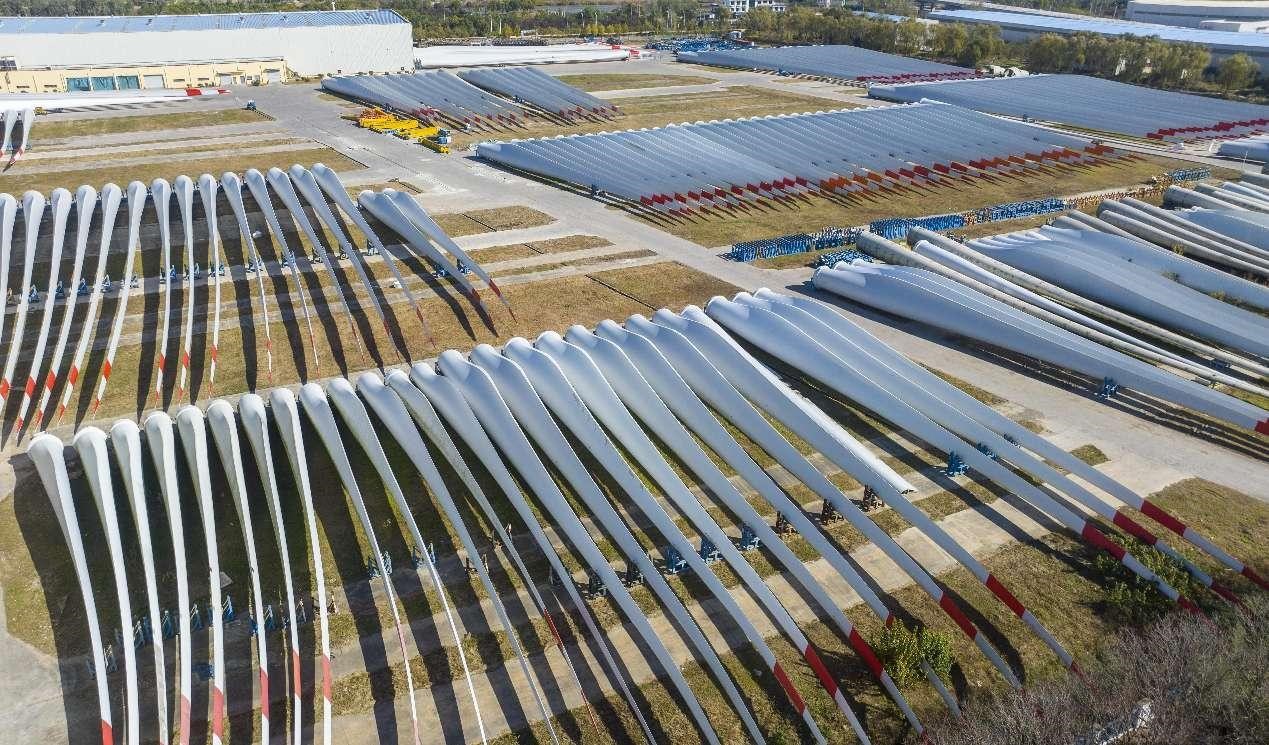
Wind turbine blades manufactured by a company in Yancheng, east China's Jiangsu province are about to be exported. (People's Daily Online/Ji Haixin)
In the city's Binhai county, 75 virtual wind turbines were displayed on a large screen at the central control center of a smart wind farm. Real-time parameters, such as wind speed and rotation speed, would be revealed with just a click on any of these virtual turbines.
"To make the turbines turn, we first need to know where the wind is coming from," said Yang Rong, deputy general manager of the Jiangsu Offshore Wind Power Company, State Power Investment Corporation.
Each turbine's nacelle is equipped with a yaw system that can accurately predict wind direction and speed each hour, helping adjust the turbine's orientation - similar to how sunflowers always face the sun - to maximize their exposure to the wind.
Yang told People's Daily that the blades can rotate at a maximum speed of 12 revolutions per minute. It is seemingly slow, but given their length of about 100 meters, the tips can reach speeds of up to 300 kilometers per hour. The blades drive the gearbox to rotate at 1,600 revolutions per minute, enabling the conversion of wind energy into electrical energy through electromagnetic induction in the machine.
In 2023, Yancheng's offshore wind farms generated 14.807 billion kWh of "green electricity," all of which was integrated into the power grid. Of this, 12.16 billion kWh was consumed locally, while the remainder was transmitted to other regions.
The three offshore wind farms in Binhai county have a total installed capacity of more than 1.1 million kW, generating 3.079 billion kWh of electricity annually, which accounts for 95.6 percent of the county's total electricity consumption. In Dafeng, this figure stands at 70.24 percent. It means that most of the electricity used in the production of wind turbines by companies like Goldwind comes from the turbines themselves.
Today, it's becoming a reality that wind turbines are generating electricity, and that same electricity is being used to produce more turbines.
Photos
Related Stories
- Green development in the picturesque countryside of E China's Jiangsu
- Tourists enjoy blooming chrysanthemum flowers in China's Jiangsu
- RV-producing town on fast track amid China's shifting tourism landscape
- How many people does it take to park a car? At this smart parking garage in Lianyungang Port, zero!
- Latin American and Caribbean journalists connect with Zhou Enlai's legacy in Huai'an, E China
Copyright © 2024 People's Daily Online. All Rights Reserved.






